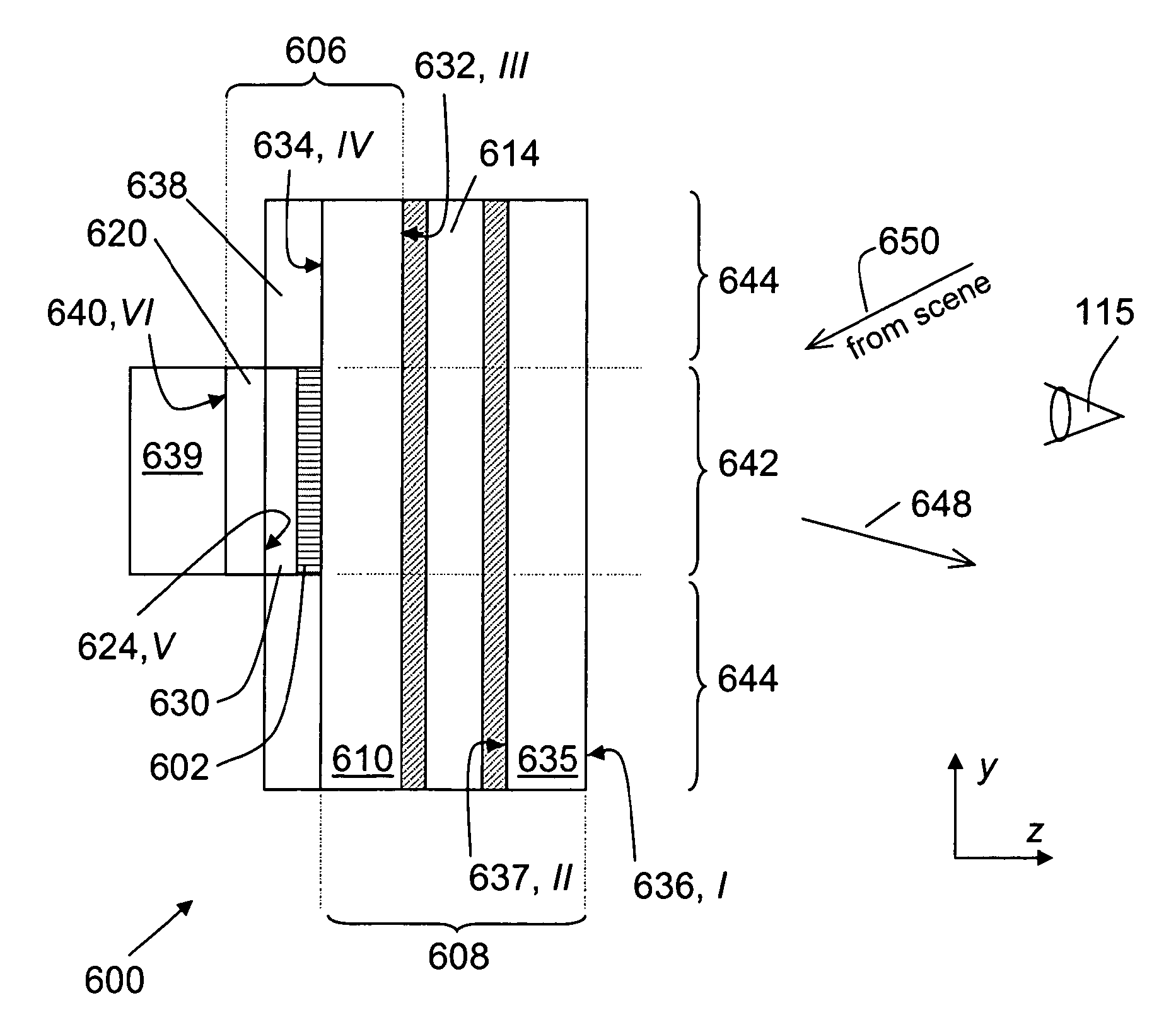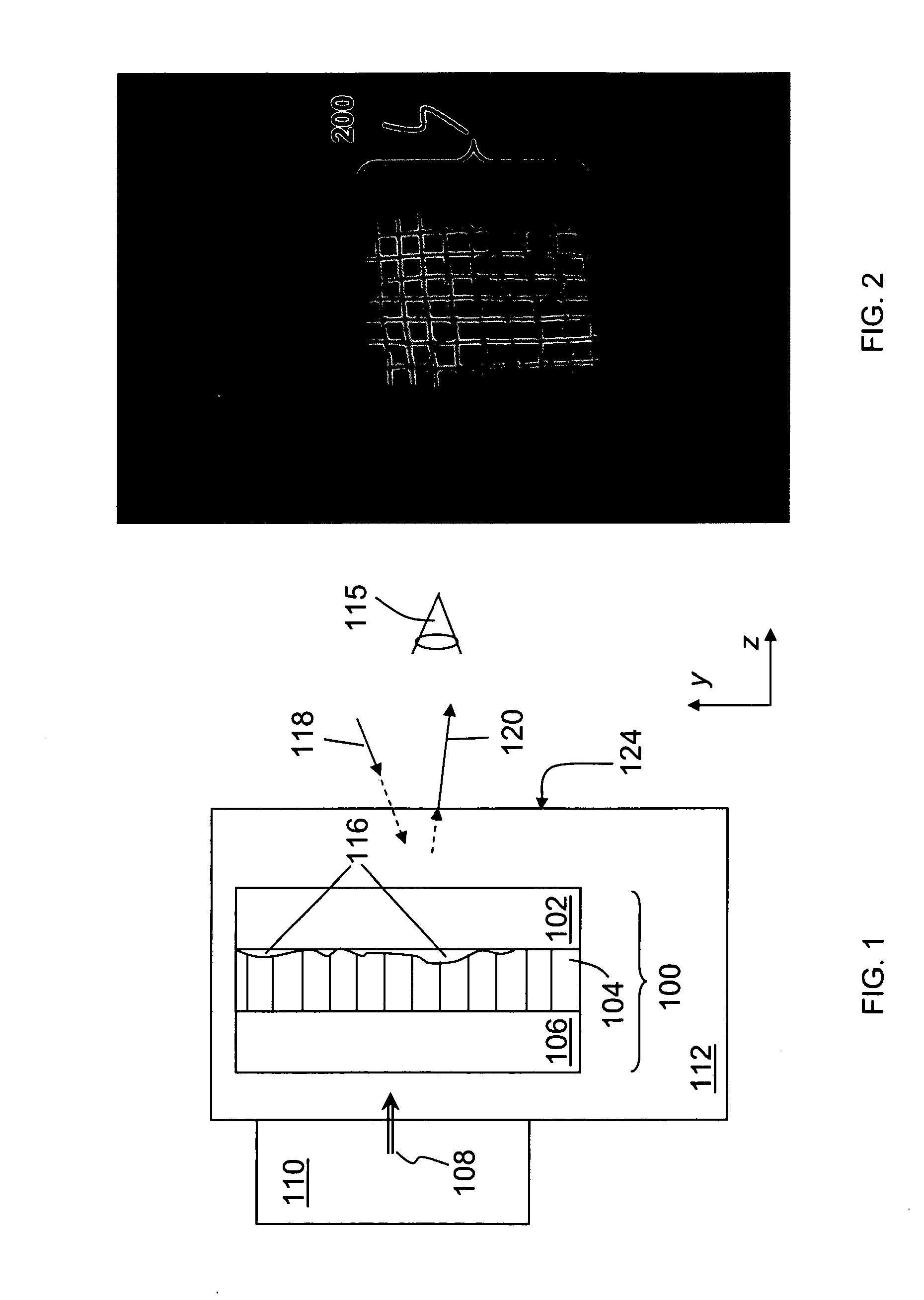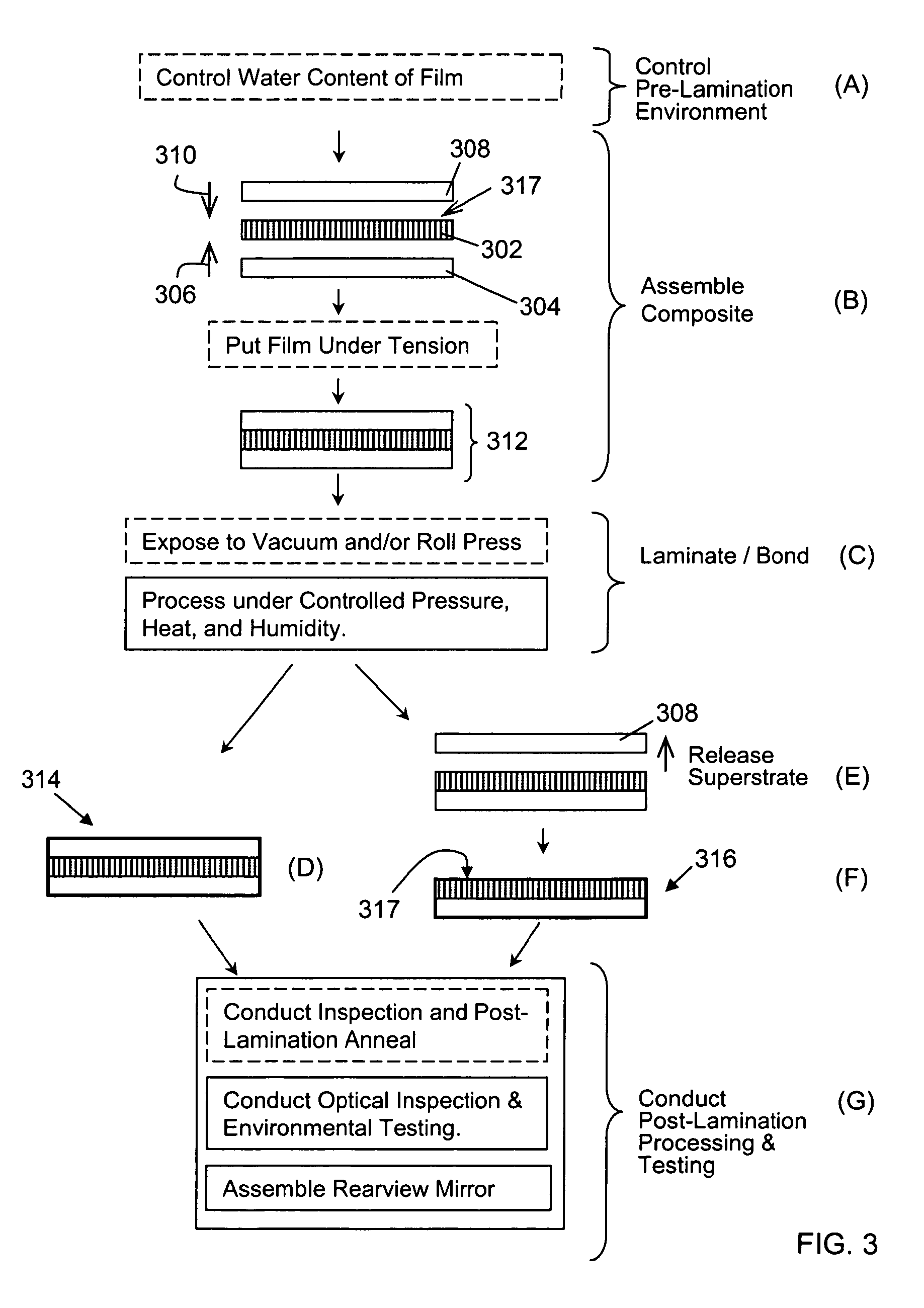Rearview mirror assemblies with anisotropic polymer laminates
a technology of anisotropic polymer and rearview mirror, which is applied in the direction of mirrors, polarising elements, instruments, etc., can solve the problems of increasing the area of the overall mirror assembly and impairing the driver's view through the windshield, and achieves the effect of enhancing the strength of the lamination bond and ensuring the flatness of the film
- Summary
- Abstract
- Description
- Claims
- Application Information
AI Technical Summary
Benefits of technology
Problems solved by technology
Method used
Image
Examples
example 1
[0152]An example of such embodiment is illustrated in FIG. 34. As shown, the embodiment 3400 includes a TN LC-cell and an EC-cell. A switchable mirror system 3410 was fabricated as a combination of the EC-mirror element 840 (140 micron wide EC-chamber filled with EC-fluid)) and the TN LC-cell 3303 (LXD Inc., Cleveland, Ohio). The sample of the mirror system further included one APBF 3312 (DBEF-Q) laminated between the element 840 and the substrate 3304 of the LC-cell 3303 and another APBF 3311 (DBEF-Q) laminated between the LC-cell 3303 and the lite of glass 3315. The thickness of glass lites was approximately 1.6 mm. (Various optical coatings, electric connections, and housing elements necessary for proper operation of either the LC-cell or the EC-mirror element and discussed elsewhere in this application are not shown in FIG. 34 for simplicity of illustration.) The polarization axes of both polarizers 3311 and 3312 were aligned. When both the LC-cell 3303 and the EC-element 840 we...
example 2
[0153]Another sample of the switchable mirror system was also fabricated according to the structure 3410, with polarization axes of the RPs 3311 and 3312 mutually aligned. The EC-element 840 included two glass substrates, each approximately 6 cm by 26 cm in size and 1.1 mm thick and carrying approximately 145 nm thick ITO electrode layers on the surfaces forming the EC-chamber. The EC-chamber of approximately 140 microns in width was assembled with the use of amine cure epoxy and filled with EC-fluid comprising 27 mM of the anodic material 5,10 dimethyl 5,10 dihydrophenazine and 32 mM of the cathodic material octylviologen tetrafluoroborate. The RPs 3311, 3312 were made of DBEF-Q sold by 3M Corp. of St. Paul, Minn. and flattened ad laminated according to the method of FIG. 3. The TN LC cell 3303 comprising two pieces of 1.1 mm glass was purchased from LXD Inc. of Cleveland, Ohio. The TN LC-cell based device was segmented, as described elsewhere in this application, to allow for inde...
example a
[0312]Table 23 lists design parameters of a thin-film stack on a glass substrate, while FIG. 38 shows a dispersion of reflectance and transmittance characteristics for this stack. The overall reflectance value for unpolarized light is about 35% in the visible range, while the transmittance nears zero below approximately 380 nm.
PUM
| Property | Measurement | Unit |
|---|---|---|
| pressure | aaaaa | aaaaa |
| pressure | aaaaa | aaaaa |
| temperature | aaaaa | aaaaa |
Abstract
Description
Claims
Application Information
 Login to View More
Login to View More - R&D
- Intellectual Property
- Life Sciences
- Materials
- Tech Scout
- Unparalleled Data Quality
- Higher Quality Content
- 60% Fewer Hallucinations
Browse by: Latest US Patents, China's latest patents, Technical Efficacy Thesaurus, Application Domain, Technology Topic, Popular Technical Reports.
© 2025 PatSnap. All rights reserved.Legal|Privacy policy|Modern Slavery Act Transparency Statement|Sitemap|About US| Contact US: help@patsnap.com



